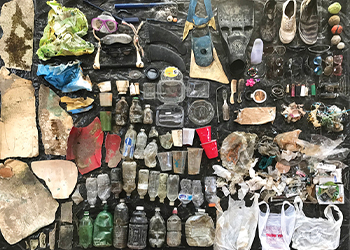It starts with a cigarette butt tossed on the sand, or an abandoned dog poop bag, a water bottle cast aside near the water’s edge. Each of these items threaten the water quality of Lake Tahoe and other pristine bodies of water in the Tahoe Sierra. When cigarette butts, plastic bags, water bottles and other garbage break down, they are reduced into smaller pieces called microplastics and pollute the water. Microplastics have been found in the oceans, lakes and water bodies around the globe, in drinking water and now they are in Lake Tahoe.
Microplastics are an emerging field of science and the Reno, Nev.-based Desert Research Institute (DRI) is one of the organizations at the forefront of studying microplastics.
Microplastics collected during a trawl of Lake Tahoe and documented in a petri dish. | Courtesy TERC
“We define microplastics as smaller than the size of a pencil eraser or less than 5 millimeters to about 1 micron, which is about the size of a bacteria. It’s the breakdown of larger pieces of plastic, what we call macroplastics, that can break down into these smaller pieces of plastic,” explains Monica Arienzo, lab director at DRI.


